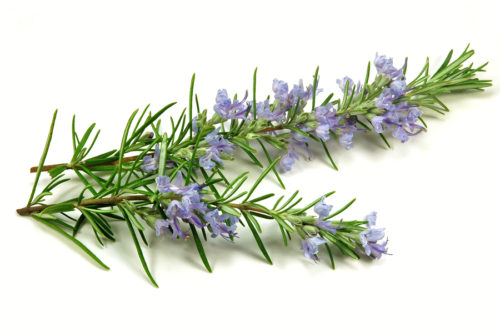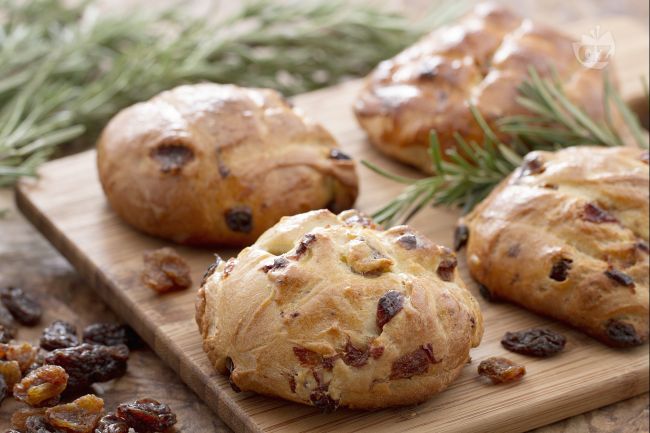Pan di Ramerino is a Florentine Easter tradition, large chewy rolls flavored with rosemary and raisins. In the past and still today, they were made for Giovedi’ Santo, Maundy Thursday (the day before Good Friday), marked with the Cross, and sold by street vendors outside the churches (often blessed by the priest) and in bakeries throughout Tuscany. It is the perfect combination of sweet and savory.

Florentine rosemary bread was born in the Middle Ages. It is a devotional product and each of its flavors is tied to a symbolic significance. It is an emblem of the immortality of the soul and during the Middle Ages it was thought that rosemary kept away evil spirits.
Grapes (raisins), olive oil and grain are metaphors of life and represent Holy Communion. In addition, the bread is cross cut (a hot-crossed bun), which favors leavening, and gives the image of the connection between religion and the bread.
Rosemary, a plant which abundantly grows in Tuscany, results in the designation ramerino (Tuscan dialect for rosmarino). It is also known as panino con lo zibibbo, which refers to the type of grape used in the ancient recipe. A local grape, zibibbo, with seeds was used in the past and now it is more common to use seedless grapes. A more modern version has a shiny, sticky sweet sugar syrup top.

The recipe includes: soft wheat flour, water, yeast, salt, olive oil, raisins and rosemary (the rosemary is roughly ground in a mortar, passed through a sieve, sautéed in oil) and made into the dough. It is divided into pieces which are left to rise under a damp cotton cloth. Before being put in the oven, the rolls are brushed with oil or a egg wash. Baking traditionally takes place in a wood-burning oven. The sugar syrup is brushed on when the cooked buns are still warm.
Production is widespread throughout Tuscany, especially in Florence, where there are more than 100 bakeries. The quantity produced is about 120-140 tons per year; demand and production in recent years are more or less stable. Sales are exclusively local, 80% directly to the public and 20% to local shops.
